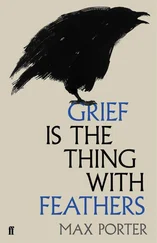The early years of the twentieth century saw a gradual rethink of the Victorian era’s poetic and artistic idolisation of grief. Increasingly, it was considered preferable to conceal grief and move on. This trend was reinforced during the First World War, when expressing deep and lasting grief was considered weak and bad for morale. Throughout the twentieth century, Western countries gradually changed from industrial to consumer societies. Stearns and Knapp (1996) write that consumerism led to a further polarisation between positive and negative emotions, in which the former were to be supported and enacted. Conversely, the consumer society simply does not afford the same time for grief. People are expected to be flexible and adaptable, rather than mired in the past and maintaining their bonds with the dead. The second half of the twentieth century saw the emergence of a burgeoning happiness industry, in which emotional culture focused on the positive, on ‘motivation’ and ‘passion’ (Davies 2015). Grief was almost diametrically opposed to the feelings of proactivity and euphoria that were dominant and in demand. Psychologists and psychiatrists began systematically drawing up symptom checklists and formulating psychiatric diagnoses for (‘complicated’) grief, in order to ensure that nobody grieved needlessly and the bereaved were able to resume their social and work roles quickly.
In simple terms, in the last two centuries, grief in the West has changed from being a normal part of life, expressed mainly through religious practices and rituals, to a defining emotion of the Victorian age, when it was cultivated in art and literature and elaborate mourning practices emerged that were independent of the religious context. This started to change again with the first major war of the twentieth century. From that point on, grief became more contained and concealed, leading eventually to medicalisation. Right now, grief again appears to have become a central phenomenon, one through which human beings can be understood, especially via art and popular culture.
Parallel with the story of how grief is enacted and practised in different epochs is a corresponding account of how research into grief has changed. One of the earliest sources in the West was Robert Burton’s The Anatomy of Melancholy (1651), in which the author interprets grief as a form of melancholia. However, he stresses that while melancholy is a disease of the mind, grief is a normal, melancholic response to loss (Granek 2010: 49). In 1872, Charles Darwin’s The Expression of the Emotions in Man and Animals was published. In this famous work, Darwin briefly touches on grief and formulates a distinction between depression and grief, and between an active form of grief and a more passive, depressive form (Granek 2010: 50). John Shand was the first to conduct a proper psychological analysis of grief, in 1914 – interestingly, the year of the outbreak of the First World War – but it was Freud’s analyses from roughly the same period that made the deepest impression on twentieth-century understandings of grief. Freud saw mental health and pathology as being on a continuum, and so did not think that there was a sudden leap from one extreme to the other. In his 1917 essay on grief and melancholy, he looked at what he saw as the core aim of ‘grief work’ (to use the psychodynamic term), which is helping the bereaved to redirect their emotional energy away from the deceased toward other aspects of life, and possibly a new loved one (Freud 2005). Freud also stressed that we should not see grief as a mental disorder and treat it with medicine or therapy. According to him, the difference between grief and melancholy (or depression, as we would say today) is simple – the former is understood within the context of loss; the latter does not involve loss and is, therefore, pathological. Phenomenologically speaking, depression is very close to grief, but without the element of loss. Or, in language closer to Freud’s own: in grief, it is the world that has become empty, while in melancholia or depression it is the self.
The first significant pathologisation of grief was formulated by Helene Deutsch in 1937. She asserted that grief work can be abnormal, and may result in a chronic, pathological condition (Granek 2010: 53). However, she also considered the absence of grief after a loss to be pathological, introducing the idea of normal grief – neither too much nor too little – which would start to have an impact on research. A few years later, Melanie Klein and other psychoanalysts talked about grief as an actual illness. In the 1940s, Erich Lindemann conducted the first major empirical studies of grief among bereaved people (Granek 2010: 57). After interviewing more than 100 respondents, he concluded that grief was an illness, and a matter for medical science. Doctors were now advised to monitor patients’ grief work, and later empirical studies by other researchers resulted in the same perspective on the phenomenon. In the 1960s, however, a critique of this strongly normative idea of grief work emerged. For example, in 1967, the anthropologist Geoffrey Gorer identified the cultural requirement to be happy as an obstacle to people grieving in ways more appropriate to their needs (Granek 2010: 61). In the late 1960s, Elisabeth Kübler-Ross also formulated the famous five stages of death and grief (isolation and denial, anger, bargaining, depression and acceptance). The jury is still out on whether it is reasonable to regard grief as a normative process in this way, but most contemporary scholars reject this view. It now appears that grief is much more individualised than any theories about phases or stages would imply (Guldin 2014).
There is also a more biological track in grief research, beginning with Darwin, and particularly associated with John Bowlby, a psychoanalyst who formulated an influential psycho-biological theory about the bonds between children and parents. This theory has also been deployed in research into patterns of grief. Colin Murray Parkes in particular has refined Bowlby’s approach by conducting empirical studies of the process and of various interventions for complicated grief. Parkes (1998) summarised the grief research up to that point and grouped it into four leading types: (1) stress and crisis theories that explain grief as a stress reaction; (2) psychodynamic theories in the Freudian tradition; (3) attachment theories in the tradition of Bowlby; and (4) psychosocial theories about life transitions. Similarly, he identifies three basic models for the current scientific knowledge about grief: (I) phase models that attempt to describe the grief process in a more or less linear fashion; (II) the medical model, which looks at grief as a medical condition; and (III) the grief work model, which emphasises the importance of the bereaved person acknowledging their loss. All of these models have, however, been strongly criticised (Walter 1999: 103), and there is currently little consensus in the field. In a review, Leeat Granek concludes that, in the early 1990s, researchers were almost exclusively concerned with grief’s dysfunctional nature. This book can be seen as an attempt to move in a different direction – one that stresses the idea that grief is existentially interesting in and of itself, and not only because of its possible clinical and pathological forms. According to Granek, the dominant themes of current research – which are not central to this book – are quantifying grief (the development of diagnostic symptom scales and lists); grief and trauma; continued discussion of the stages theory; individual differences in terms of grief reactions and mastering them; and above all else, complicated grief, in other words grief as an illness (Granek 2010: 65). While these themes are important, the focus in this book is on grief’s very essence.
Читать дальше












